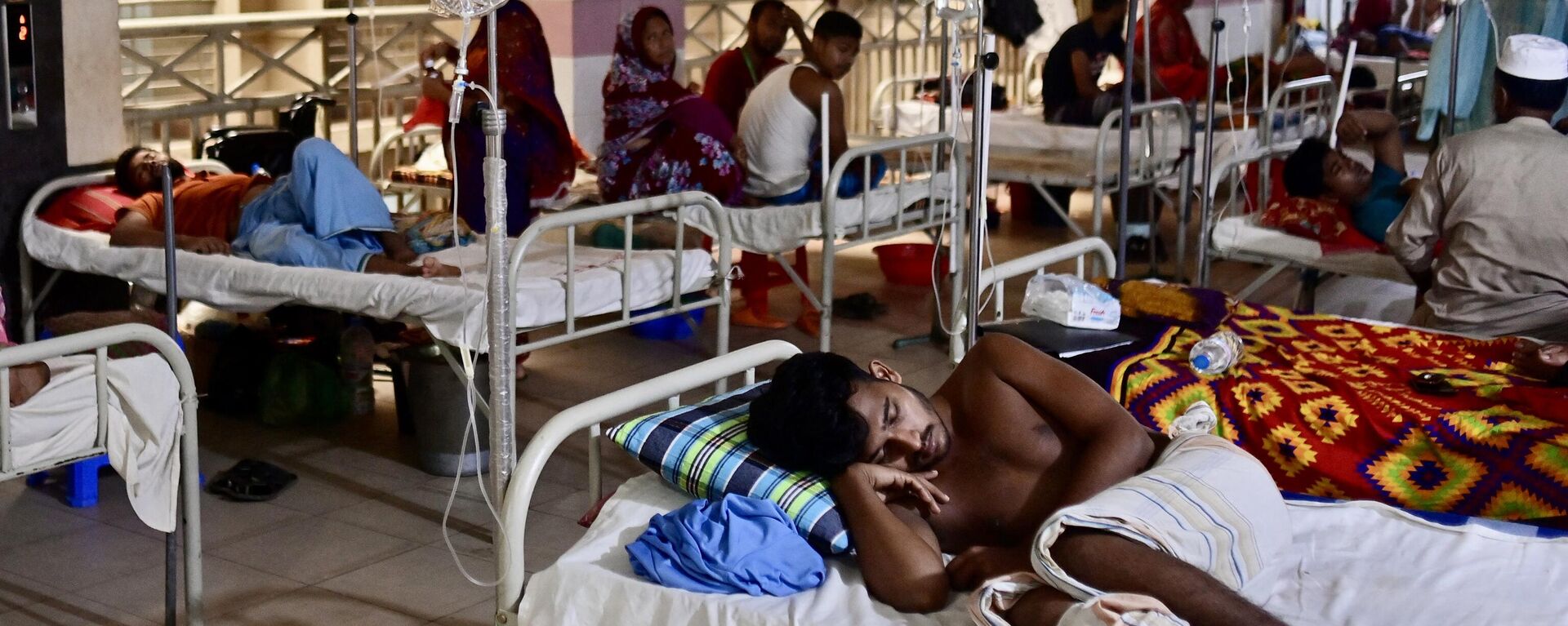https://en.sputniknews.africa/20231105/animal-transmitted-viruses-to-cause-even-more-deaths-by-2050-study-finds-1063329644.html
Animal-Transmitted Viruses to Cause Even More Deaths by 2050, Study Finds
Animal-Transmitted Viruses to Cause Even More Deaths by 2050, Study Finds
Sputnik Africa
Zoonoses or zoonotic diseases, caused by harmful viruses, bacteria, parasites, and fungi, have been responsible for most modern epidemics. Since the 1960s... 05.11.2023, Sputnik Africa
2023-11-05T10:24+0100
2023-11-05T10:24+0100
2023-11-05T10:26+0100
bolivia
latin america
health
virus
world economic forum (wef)
west africa
https://cdn1.img.sputniknews.africa/img/07e7/0b/05/1063328168_0:239:3072:1967_1920x0_80_0_0_a56e4b8fbd9ac93aed0364f98eeed8ac.jpg
Over the past 50 years, cases of virus transmission from mammals and birds to humans have increased significantly, according to a study published in the British journal BMJ Global Health.Between 1963 and 2019, 75 episodes of zoonoses occurred in 24 countries, write the authors of the study, researchers from the American biotechnology company Ginkgo Bioworks. More than 3,150 outbreaks were studied.Researchers have focused only on four classes of viruses: filoviruses (Ebola, Marburg virus), severe acute respiratory syndrome coronavirus (SARS-CoV-1), Nipah virus and Machupo virus, responsible for hemorrhagic fever in Bolivia.During the studied period, these zoonotic diseases caused a total of 17,232 deaths, the majority of which (15,771) were caused by filoviruses, which can cause severe hemorrhagic fever in people and non-human primates (such as monkeys and gorillas), mainly in Africa, according to the study.Worrying Forecasts for 2050These four types of infections from animals to humans have been increasing at an "exponential rate." Based on the study, by 2050 these infections could cause 12 times more deaths than in 2020.The research suggested that there has been a growing number of epidemics caused by zoonotic outbreaks and it is challenging to predict the future implications for global health due to limited historical data on the frequency and severity of zoonotic spillover, but it is necessary to take action.
https://en.sputniknews.africa/20231006/dengue-fever-to-become-serious-threat-to-africa-us-southern-europe-this-decade-who-says-1062585191.html
bolivia
latin america
west africa
Sputnik Africa
feedback@sputniknews.com
+74956456601
MIA „Rossiya Segodnya“
2023
Samantha Arias
https://cdn1.img.sputniknews.africa/img/07e7/0a/18/1063050346_115:0:834:719_100x100_80_0_0_1682778780537fd5aa8dd2536a012c1b.jpg
Samantha Arias
https://cdn1.img.sputniknews.africa/img/07e7/0a/18/1063050346_115:0:834:719_100x100_80_0_0_1682778780537fd5aa8dd2536a012c1b.jpg
News
en_EN
Sputnik Africa
feedback@sputniknews.com
+74956456601
MIA „Rossiya Segodnya“
Sputnik Africa
feedback@sputniknews.com
+74956456601
MIA „Rossiya Segodnya“
Samantha Arias
https://cdn1.img.sputniknews.africa/img/07e7/0a/18/1063050346_115:0:834:719_100x100_80_0_0_1682778780537fd5aa8dd2536a012c1b.jpg
bolivia, latin america, health, virus, world economic forum (wef), west africa
bolivia, latin america, health, virus, world economic forum (wef), west africa
Animal-Transmitted Viruses to Cause Even More Deaths by 2050, Study Finds
10:24 05.11.2023 (Updated: 10:26 05.11.2023) Samantha Arias
Producer / Podcast host
Zoonoses or zoonotic diseases, caused by harmful viruses, bacteria, parasites, and fungi, have been responsible for most modern epidemics. Since the 1960s, these infections that spread from animals to humans have become more frequent and increasingly deadly.
Over the past 50 years, cases of virus transmission from mammals and birds to humans have increased significantly, according to a study published in the British journal BMJ Global Health.
Between 1963 and 2019, 75 episodes of zoonoses occurred in 24 countries, write the authors of the study, researchers from the American biotechnology company Ginkgo Bioworks. More than 3,150
outbreaks were studied.
Researchers have focused only on four classes of viruses: filoviruses (
Ebola, Marburg virus), severe acute respiratory syndrome coronavirus (SARS-CoV-1), Nipah virus and Machupo virus, responsible for hemorrhagic fever in Bolivia.
During the studied period, these zoonotic diseases caused a total of 17,232 deaths, the majority of which (15,771) were caused by filoviruses, which can cause severe hemorrhagic fever in people and non-human primates (such as monkeys and gorillas), mainly in Africa, according to the study.
Worrying Forecasts for 2050
These four types of infections from animals to humans have been increasing at an "exponential rate." Based on the study, by 2050 these infections could cause 12 times more deaths than in 2020.
"If these annual rates of increase continue, we would expect the analyzed pathogens to cause four times the number of spillover events and 12 times the number of deaths in 2050 than in 2020," the authors estimated.
The research suggested that there has been a growing number of epidemics caused by zoonotic outbreaks and it is challenging to predict the future implications for global health due to limited historical data on the frequency and severity of zoonotic spillover, but it is necessary to take action.
"The ultimate package of measures to support global prevention, preparedness, and resilience is not yet clear. What is clear, however, from the historical trends, is that urgent action is needed to address a large and growing risk to global health," the researchers stated.



